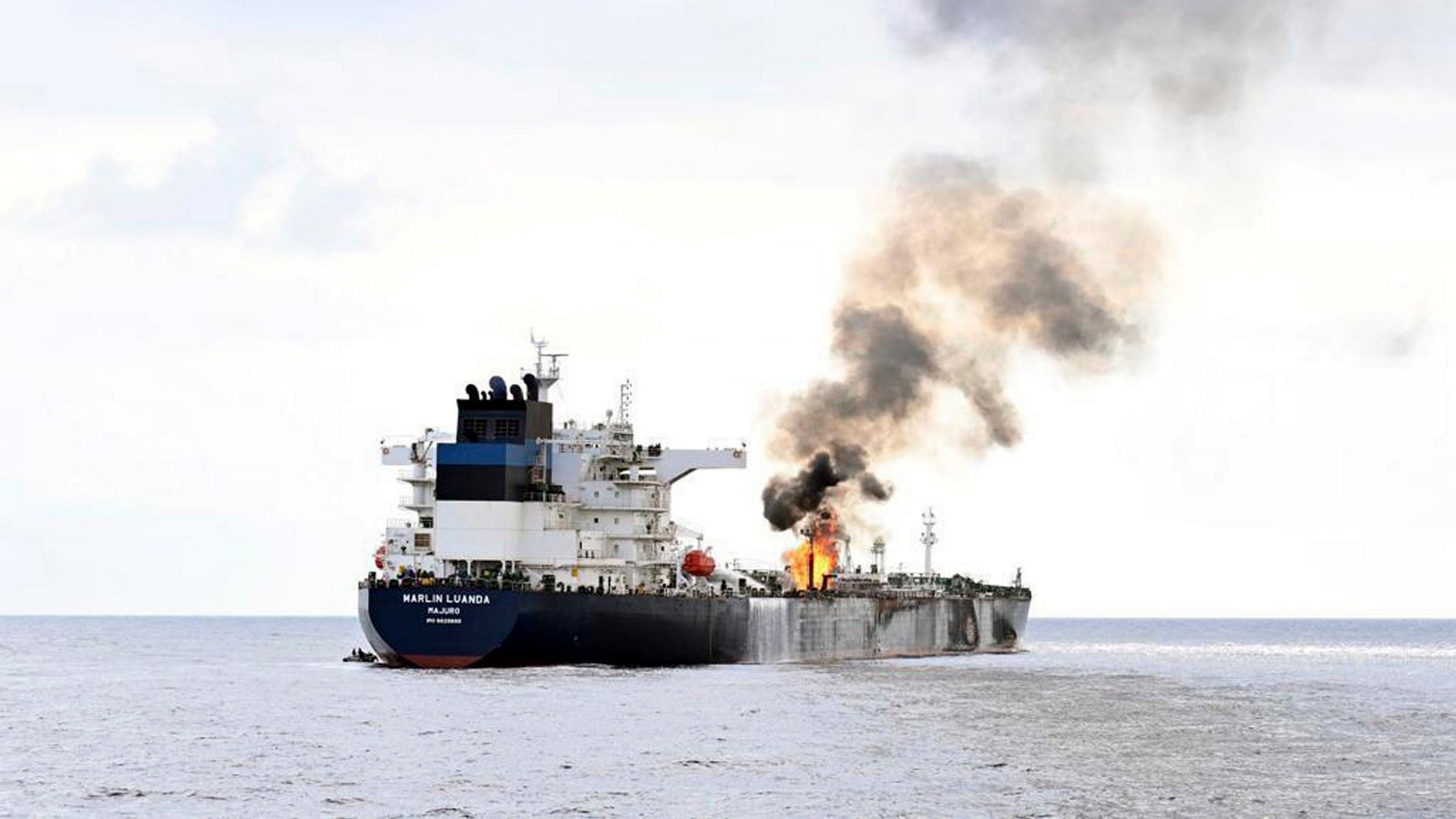
In this photo provided by the Indian Navy on Saturday, Jan. 27, 2024, a view of the oil tanker Marlin Luanda on fire after an attack, in the Red sea. The crew aboard a Marshall Islands-flagged tanker hit by a missile launched by Yemen’s Houthi rebels is battling a fire onboard the stricken vessel sparked by the strike.
Credit: PTI Photo
New Delhi: Continued shipping disruptions due to the ongoing crisis in the Red Sea pose upside risk to inflation and may also hit economic growth, Union Finance Ministry said in its monthly economic review released on Friday.
Around 80% of India’s merchandise trade with Europe passes through the Red Sea, with key products such as crude oil, auto & auto ancillaries, chemicals, textiles, and iron & steel being affected. The combined impact of higher freight costs, insurance premiums, and longer transit times could make imported goods significantly more expensive.
The Finance Ministry noted that the ongoing conflict in the Middle East and the Red Sea has impacted India’s import of fertiliser from the Middle East. India’s import of the Muriate of Potash from Jordan and Israel has also been affected.
“The combined impact of higher freight costs, insurance premiums, and longer transit times could make imported goods significantly more expensive,” it said.
“Asian economies such as China, Japan, India, and South Korea are among the largest net oil importers globally. Hence continued shipping disruptions could hit Asia. A rise in oil prices may pose upside risks to inflation and, consequently, to growth,” the report stated.
Due to the ongoing crisis in the Red Sea shipping route, container ships are forced to take a longer route through the Cape of Good Hope in southern Africa. By the first half of February 2024, container tonnage crossing the Suez Canal fell by 82%, while vessel tonnage passing through the Cape of Good Hope increased by 60%.
The extra miles travelled and days lost due to trade diversion has translated into additional costs such as fuel costs and lost value of time-sensitive cargo. The other additional costs are arising from the prevailing security considerations, including the risk of piracy, which generates a surge in insurance and legal claims.
The Red Sea crisis began in October when Yemen’s Houthi militants launched missiles and drone attacks on commercial shipping in the Red Sea in support of Palestinians as Israel waged war in Gaza. With the ongoing Israel-Hamas conflict, tension in the Suez Canal shipping route continues to escalate.
Despite persistent geopolitical headwinds, the Finance Ministry noted that India’s external account is stable. “Merchandise trade deficit is narrowing, fuelled by falling international commodity prices. Services exports remain strong, resulting in an increase in net services receipts,” it said.
“In FY25, however, the current account deficit will bear watching,” the ministry said.
The Finance Ministry noted that an increase in domestic household savings will be necessary to finance private sector capital formation in the economy.
The capital expenditure in the recent years has been broadly driven by the government. The Government’s effective capex is expected to be 4.6% of GDP in FY25, as per the interim budget, which is a substantial 200 basis point increase from 2.6% of GDP in FY20.
The ministry claimed that the government’s thrust on capex would continue to “crowd in private investment.”
Gross Fixed Capital Formation (GFCF) at constant prices registered a growth of 10.6% in Q3 of FY24. There has been a broad-based pick-up in investment, as reflected in the rising share of GFCF, which increased from 29.6% in FY22 to 31.3% of GDP in FY24, it said.